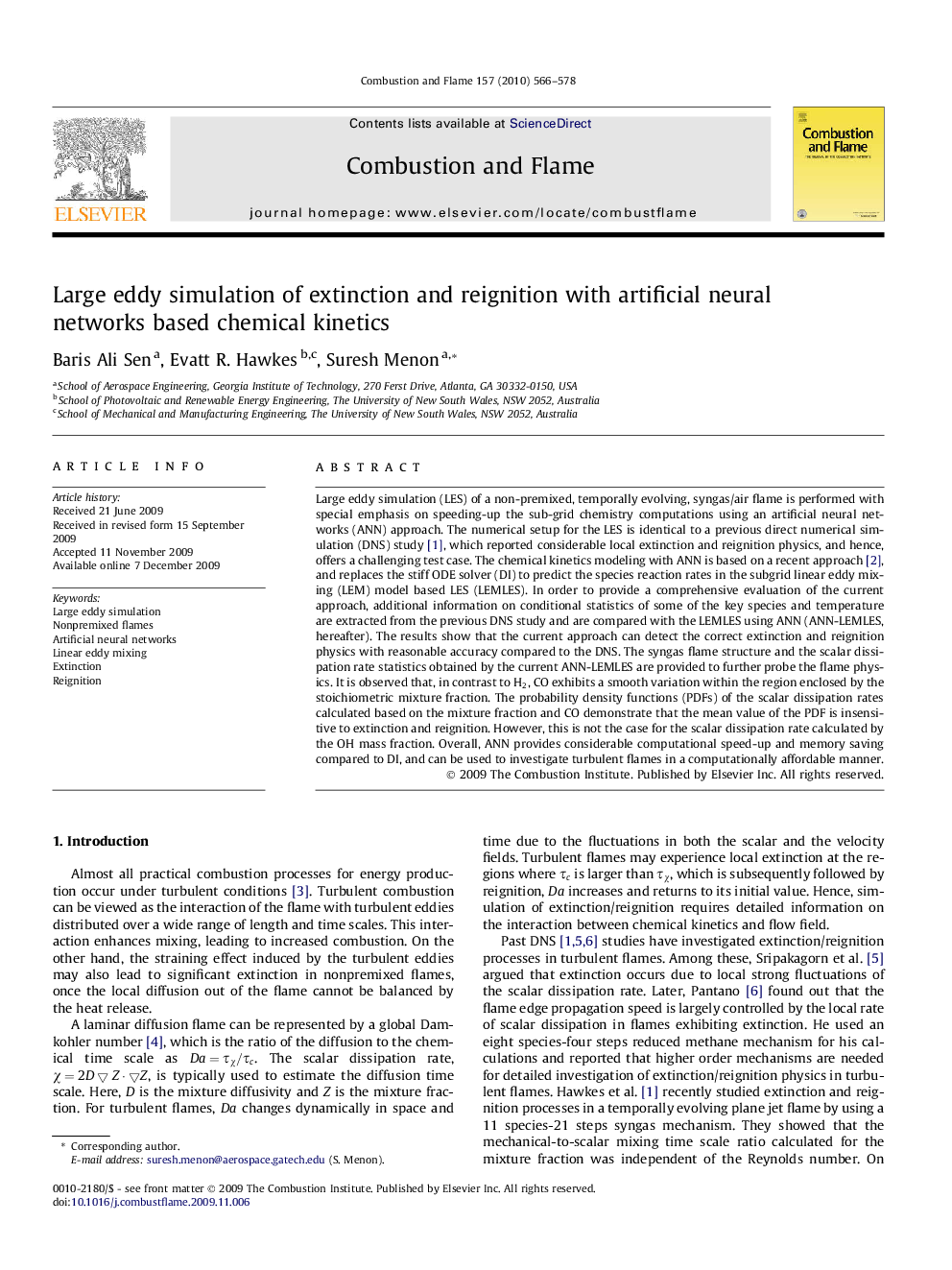| Article ID | Journal | Published Year | Pages | File Type |
|---|---|---|---|---|
| 169688 | Combustion and Flame | 2010 | 13 Pages |
Large eddy simulation (LES) of a non-premixed, temporally evolving, syngas/air flame is performed with special emphasis on speeding-up the sub-grid chemistry computations using an artificial neural networks (ANN) approach. The numerical setup for the LES is identical to a previous direct numerical simulation (DNS) study [1], which reported considerable local extinction and reignition physics, and hence, offers a challenging test case. The chemical kinetics modeling with ANN is based on a recent approach [2], and replaces the stiff ODE solver (DI) to predict the species reaction rates in the subgrid linear eddy mixing (LEM) model based LES (LEMLES). In order to provide a comprehensive evaluation of the current approach, additional information on conditional statistics of some of the key species and temperature are extracted from the previous DNS study and are compared with the LEMLES using ANN (ANN-LEMLES, hereafter). The results show that the current approach can detect the correct extinction and reignition physics with reasonable accuracy compared to the DNS. The syngas flame structure and the scalar dissipation rate statistics obtained by the current ANN-LEMLES are provided to further probe the flame physics. It is observed that, in contrast to H2H2, CO exhibits a smooth variation within the region enclosed by the stoichiometric mixture fraction. The probability density functions (PDFs) of the scalar dissipation rates calculated based on the mixture fraction and CO demonstrate that the mean value of the PDF is insensitive to extinction and reignition. However, this is not the case for the scalar dissipation rate calculated by the OH mass fraction. Overall, ANN provides considerable computational speed-up and memory saving compared to DI, and can be used to investigate turbulent flames in a computationally affordable manner.
